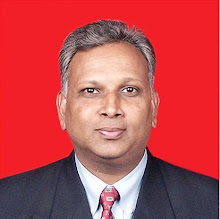HAVE A PROBLEM, ASK EVERYONE
Posted online: Sunday, July 27, 2008 at 1304 hrs ![]() Print
Print ![]() Email
Email

John Davis, a chemist in
The chemist and the institute came together through InnoCentive, a company that links organisations (seekers) with problems (challenges) to people all over the world (solvers) who win cash prizes for resolving them. The company gets a posting fee and, if the problem is solved, a “finder’s fee” equal to about 40 per cent of the prize. The process, according to John Seely Brown, a theorist of information technology and former director of the
The approach is catching on. Today, would-be innovators can sign up online to compete for prizes for feats as diverse as landing on the Moon and inventing artificial meat. This year, researchers at the Howard Hughes Medical Institute and the
Offering prizes for scientific achievements is hardly new. “It has been around for centuries,” said Karim R. Lakhani, a professor at
Dwayne Spradlin, president and chief executive of InnoCentive, said that the company had solved 250 challenges, for prizes typically in the $10,000-$25,000 range. The achievements include a compound for skin tanning, a method of preventing snack chip breakage and a mini-extruder in brick-making. “Odds are one or more products in your home has been innovated in our network,” Spradlin said. “Procter & Gamble has products innovated on the network.”
InnoCentive began in 2000 as e.Lilly, an in-house innovation “incubator” at the pharmaceutical giant Eli Lilly, Spradlin said, with the company posting problems that its employees had been unable to solve. “Most of our companies tell us they have a one-third or better solve rate on their problems and that is more cost-effective than anything they could have done internally.”
The company says solvers come from 175 countries. More than a third have doctorates, Spradlin said, and while motivated by money, they also have a desire to solve “problems that matter”. The company has offices in
The idea that solutions can come from anywhere, and from people with seemingly unrelated work, is another key. Lakhani said “the further the problem was from the solver’s expertise, the more likely they were to solve it”, often by applying specialised knowledge or instruments developed for another purpose.
The oil-flow problem was solved by an outsider, said Scott Pegau, its research programme manager. If it could easily have been solved “by people within the industry, it would have been,” he said. Instead,
-CORNELIA DEAN (New York Times)

No comments:
Post a Comment